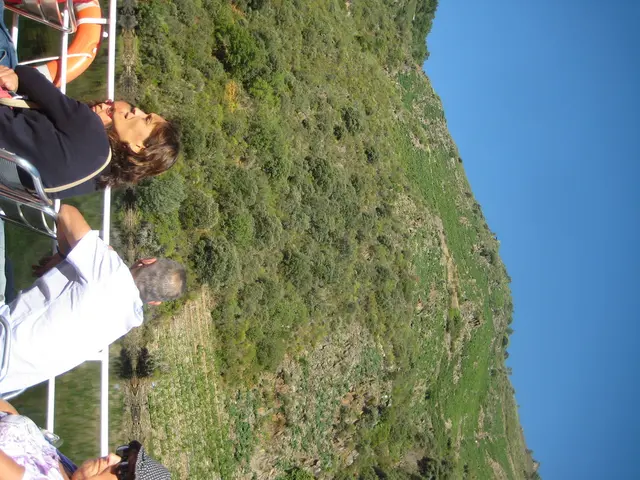Top 14 Ideal Shade-Providing Trees for Your Garden
Hot Desert Climates: Perfect for Shade-Providing Trees
In the hot and arid landscapes of deserts, finding the right shade trees can make all the difference. These resilient and adaptable species not only provide much-needed shade but also thrive in low-water environments and harsh desert conditions.
One such tree is the Desert Willow (Chilopsis linearis), native to the arid southwestern U.S., which produces long, slender leaves and abundant pink or purple trumpet-shaped flowers throughout the summer. Another top choice is the Palo Verde (Parkinsonia spp.), a tree that features green trunks and branches that photosynthesize when leaves drop during extreme drought, offering vital shade and supporting pollinators like bees in desert climates. The Mesquite also belongs to this group, providing ample shade and adapting well to hot, arid conditions.
For those seeking shade in warmer zones similar to deserts, the Crape Myrtle (Lagerstroemia indica) is a notable option. Known for its ability to withstand heat and drought, it boasts attractive blooms and bark.
In the realm of native and drought-tolerant species, Mesquite, Desert Willow, and Palo Verde remain top choices due to their proven adaptability and performance. Planting these trees strategically around homes in desert areas improves comfort and reduces cooling costs by creating cooler microclimates.
Other shade trees suitable for hot desert climates include the Chinese Pistache, the Arizona Ash, and the Southern Live Oak. These species, like their counterparts, offer shade, require low water, and are well-adapted to hot, arid conditions.
The Littleleaf Linden (Tilia cordata) is another versatile option, offering deep shade and pollinator-friendly flowers. Its heart-shaped leaves form a dense, pyramidal canopy that provides excellent shade. The Littleleaf Linden is suitable for diverse climates and landscapes, growing in zones 3-7.
The Live Oak (Quercus virginiana) is a hardy, sprawling evergreen that creates a wide, majestic crown of shade, growing in zones 7-10. The Black Tupelo (Nyssa sylvatica) thrives in a variety of soils, from swampy to dry, and is known for its glossy green summer leaves and brilliant autumn colors, growing in zones 4-9.
For water-side properties, the Bald Cypress is an excellent choice, offering excellent shade while improving soil stability. It thrives in both swampy and moderately dry soils, growing in zones 4-10.
The Sweet Acacia (Vachellia farnesiana) is an arid-region native with yellow, puffball blooms and thorny branches that form a dense, rounded canopy. Ideal for xeriscaping projects in areas with scorching summer temperatures, it is drought-tolerant (once established) and provides shade.
Lastly, the Ginkgo (Ginkgo biloba) is a disease-resistant, pollution-tolerant tree with fan-shaped leaves that turn brilliant yellow in the fall. The River Birch (Betula nigra) thrives in wet, poorly drained soils and provides exceptional shade with its dense canopy.
The Japanese Zelkova (Zelkova serrata) is an elegant tree that is highly adaptable, tolerating urban conditions and resisting pests and drought. It makes for a low-maintenance option for shading patios and pathways, with a vase shape, serrated leaves, and attractive bark that peels to reveal tones of orange and gray.
The Southern Magnolia (Magnolia grandiflora) is a quintessential symbol of the South, with glossy evergreen leaves and giant, fragrant white flowers. Northern Red Oak (Quercus rubra) is regal and practical, featuring lobed leaves that offer deep shade and vivid red hues in fall.
With these diverse shade tree options, desert dwellers can transform their outdoor spaces into cool, shady havens that not only provide comfort but also contribute to energy savings and support local ecosystems.
- In the hot desert landscapes, the Desert Willow (Chilopsis linearis), with its long slender leaves and pink or purple flowers, offers much-needed shade and thrives under low-water conditions.
- Planting strategically these adaptable trees like Mesquite, Desert Willow, and Palo Verde around homes in desert areas not only provides comfort and reduces cooling costs but also enhances the lifestyle of homeowners.
- For those wanting shade in warmer zones, the Crape Myrtle (Lagerstroemia indica) is a suitable option, boasting attractive blooms and bark, and known for its heat and drought resistance.
- The Littleleaf Linden (Tilia cordata) is another versatile tree for various landscapes, providing deep shade, pollinator-friendly flowers, and adapting to diverse climates.
- For water-side properties, the Bald Cypress is an ideal choice as it offers excellent shade, improves soil stability, and thrives in both swampy and moderately dry soils.
- To add a fashionable touch to food-and-drink gardens, the Sweet Acacia (Vachellia farnesiana) with its yellow, puffball blooms and thorny branches can lend an exotic appeal to xeriscaping projects in hot regions.




